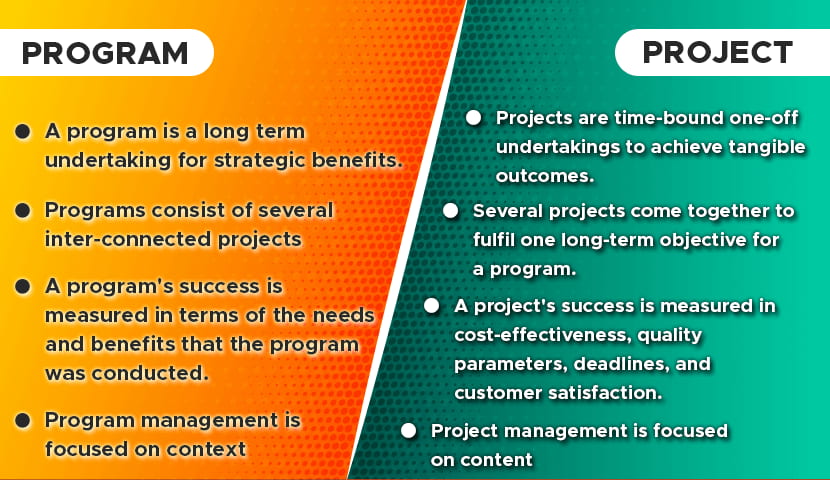Business
Why Protecting Your Assets Should Be a Financial Priority

As an investor, you’ve worked hard to build your portfolio and accumulate wealth. However, the journey doesn’t stop at asset accumulation. Equally crucial is the protection of these assets. In an unpredictable world, safeguarding your investments from potential risks and unforeseen events should be a top financial priority.
This blog post delves into why asset protection is essential for investors, the risks of neglecting it, and effective strategies to secure your financial future.
Understanding Asset Protection
What Constitutes as an Asset?
In a financial context, an asset is any resource owned by an individual or entity that is expected to provide future economic benefits. For investors, assets typically include stocks, bonds, real estate, cash, and personal property such as vehicles and valuable collectibles. Intellectual property, business interests, and retirement accounts are also considered assets.
Common Misconceptions About Asset Protection
Many investors mistakenly believe that asset protection is only necessary for the ultra-wealthy or that it’s an overly complex process. However, the reality is that asset protection is relevant for anyone looking to preserve their wealth, regardless of the size of their portfolio. Another misconception is that asset protection is synonymous with tax evasion or illegal activities, which is far from the truth. Asset protection is about using legal strategies to shield your wealth from potential threats, not about avoiding your financial responsibilities. Here, the best CRM for real estate investors can become a powerful tool to manage and safeguard your investments more effectively.
The Risks of Not Protecting Your Assets
Failing to adequately protect your assets can have severe consequences that can erode your hard-earned wealth. From legal disputes and creditor claims to unforeseen market downturns, the risks are numerous and often unpredictable.
Examples of Scenarios Where Lack of Protection Led to Significant Losses
- Lawsuits: Imagine a successful entrepreneur who faces a lawsuit due to a business dispute. Without proper asset protection measures, personal assets such as homes, savings, and investments could be at risk of being seized to satisfy a judgment.
- Market Volatility: An investor with a heavily concentrated portfolio in a single sector may experience significant losses during a market downturn. Diversification as a form of asset protection could have mitigated these losses.
- Natural Disasters: Property owners without adequate insurance may face substantial financial burdens if their properties are damaged or destroyed by natural disasters. Proper insurance coverage can safeguard against such risks.
Strategies for Asset Protection
To effectively safeguard your assets, it is essential to employ a comprehensive and proactive approach. Here are some key strategies to enhance your asset protection plan:
Diversification: The Importance of Spreading Your Investments
Diversification is a fundamental strategy in asset protection. By spreading your investments across various asset classes, sectors, and geographical regions, you reduce the risk of significant losses from a single event. A well-diversified portfolio can help cushion the impact of market volatility and economic downturns, ensuring that your overall wealth remains more stable.
Legal Structures: Overview of Trusts, LLCs, and Other Entities
Legal structures such as trusts, limited liability companies (LLCs), and corporations offer layers of protection for your assets.
- Trusts: Placing assets in a trust can shield them from creditors and legal judgments while providing estate planning benefits. Trusts can be tailored to meet specific needs, such as revocable or irrevocable trusts.
- LLCs and Corporations: These legal entities can protect personal assets from business liabilities. If your business faces legal action, only the assets owned by the LLC or corporation are at risk, not your wealth.
Insurance: How It Can Be Used as a Form of Protection
Insurance is a crucial component of asset protection. Different types of insurance, such as property, liability, health, and life insurance, can safeguard your assets against various risks. Consult any financial expert or insurance agency in West Jordan to determine what among the many insurance options is right for you.
- Property Insurance: Protects real estate and personal property from damage or loss due to events like fire, theft, or natural disasters.
- Liability Insurance: Shields your assets in case you are held liable for injuries or damages to others.
- Health and Life Insurance: Ensures that medical expenses or untimely death do not deplete your savings or leave your dependents financially vulnerable.
Estate Planning: Ensuring Assets are Protected for Future Generations
Estate planning involves making arrangements for the management and distribution of your assets after your death. This includes creating wills, establishing trusts, and designating beneficiaries. Proper estate planning ensures that your assets are distributed according to your wishes and can help minimize taxes and legal complications for your heirs. It also protects your legacy, ensuring that the wealth you’ve built benefits future generations.
The Role of Asset Protection in Long-Term Financial Planning
Asset protection is not just about safeguarding your wealth; it’s an integral part of long-term financial planning. By protecting your assets, you ensure that your financial goals—such as funding retirement, supporting your family, and leaving a legacy—are not derailed by unforeseen events. Asset protection strategies align with broader financial objectives, providing a comprehensive approach to wealth management that includes risk mitigation, growth, and preservation.
Conclusion
If you’re ready to take the next step in protecting your assets, consider consulting with financial professionals to develop a tailored asset protection plan. Remember, the best time to start protecting your assets is now—before the unexpected happens. For more insights and personalized advice on asset protection strategies, contact us today.

Business
Optimizing Warehouse Operations: The Essential Guide to Equipment and Efficiency

Warehouses and industrial settings are critical hubs in the supply chain, facilitating the flow of goods across the globe. They are dynamic environments that demand high levels of efficiency to function effectively. Central to achieving this efficiency is the equipment used on a daily basis – from warehouse trolleys to lifting hooks, every tool plays a pivotal role in the overall productivity of the space. In this article, we explore various elements of Workplace Equipment that are essential for optimising operations and creating a smooth, safe work environment.
Understanding the Role of Warehouse Trolleys
Efficient transportation of goods within a warehouse is fundamental to maintaining a fast-paced workflow.A Warehouse trolley is at the forefront of facilitating this. They come in numerous forms, including platform trolleys, picking trolleys, and more specific designs tailored to unique warehouse tasks. Their uses range from carrying small to medium-sized goods around with ease to aiding in order picking and inventory management.
The Significance of Quality Lifting Equipment
Productivity and safety are two cornerstones of any successful warehouse operation. Quality lifting equipment such as lifting hooks, jibs, and hoists expand the capabilities of workers, allowing them to move heavy or bulky items without risking injury or product damage. Each type of lifting equipment is designed with a specific purpose in mind, ensuring that there is a tool for every kind of lifting and handling requirement.
Selecting the Right Workplace Equipment
The broader category of Workplace Equipment encompasses a vast array of tools and machinery, each contributing to a facet of warehouse operations. This includes storage solutions, workbenches, ladders, and even safety gear. Selecting the right combination of equipment can drastically improve workflow and reduce the time spent on each task.
Aligning Equipment with Workflow Requirements
Before introducing or upgrading equipment, it’s important to understand the workflow requirements of the warehouse. The selection of tools like warehouse trolleys should match the specific needs of the operations, such as load capacity, maneuverability, and storage. Similarly, the choice of lifting equipment must take into consideration factors like maximum weight, lift height, and frequency of use.
Investing in Adaptability
In the fast-evolving world of warehousing and logistics, it’s crucial to invest in equipment that is adaptable to various tasks. Modular systems and multipurpose tools can provide the flexibility needed to cater to changing business needs and can reduce the need for numerous single-function items.
Prioritising Employee Comfort and Safety
The welfare of employees should always be a top concern. This is why ergonomic design in workplace equipment is vital. Tools that are easy to use and reduce strain on the body not only enhance safety but also improve the morale and productivity of the workforce.
Advantages of Operation-Specific Equipment
Though generic tools can serve multiple purposes, there is a distinct advantage to using operation-specific equipment. Warehouse trolleys designed for specific materials or products can increase efficiency, while specialized lifting hooks might be essential for handling certain types of loads safely.
Technology Integration
Modern warehouses are also embracing technological advancements. Equipment with integrated technology, such as barcode scanners on picking trolleys or digital load indicators on lifting equipment, can provide real-time information that enhances decision-making and streamlines operations.
Maintenance and Upkeep of Warehouse Tools
Maintenance is another crucial aspect of selecting the right equipment. Tools that are durable and easy to maintain can prevent downtime, which affects overall productivity. Equipping a warehouse with high-quality, reliable tools is an investment that pays dividends in the long run.
Conclusion
In sum, the right warehouse and workplace equipment is the cornerstone of efficient, safe, and productive operations. From the humble warehouse trolley to the high-capacity lifting hooks, each tool has a significant role to play. By thoughtfully selecting, maintaining, and integrating advanced Workplace Equipment, warehouse operations can be optimized to meet the rigorous demands of today’s fast-paced market.
Final Thoughts
Ultimately, the goal is to have a fully harmonized warehouse environment, where the choice of equipment directly contributes to the operational efficiency, staff well-being, and the company’s bottom line. As warehouses continue to evolve, keeping abreast of the latest tools and technologies in material handling will remain a key factor for success in this competitive landscape.
Business
Financing Your Dreams: A Guide to Personal Loans, Motorcycle, and Used Car Financing in Australia

Australians are known for their love of freedom and adventure, whether it’s cruising along the coastal roads on a motorcycle or exploring the vast terrain of the outback in a sturdy car. However, not everyone has the upfront capital to make these dreams a reality. Fortunately, there are various financing options available that can help. In this guide, we’ll delve into the world of personal loans in Australia, motorcycle financing, and used car loans to provide a pathway to owning your dream ride.
The Benefits of Personal Loans
When it comes to financing significant purchases, personal loans can be an excellent option. They offer a fixed lending term, predictable repayment schedules, and often come with competitive interest rates. One of the pivotal advantages is their versatility; you can use personal loans in Australia for a variety of purposes, including home renovations, holidays, and, of course, buying a vehicle.
Personal loans can also contribute positively to your credit score when managed wisely. By making regular payments on time, you demonstrate financial reliability, which can make it easier to obtain future credit. However, it’s essential to consider your ability to repay the loan before you commit, as defaults can have the opposite effect, damaging your credit score.
The Process of Securing a Personal Loan
To obtain a personal loan in Australia, you’ll typically need to prove your ability to repay the debt. This means providing documentation related to your income, employment, and existing financial commitments. Credit history also plays a crucial role in the process; a clean credit report can significantly boost your chances of approval and may result in more favourable loan terms.
Once you’ve selected a lender, you’ll begin the application process, which usually involves a credit check and loan approval procedures. If successful, you’ll be given a lump sum of money to put towards your intended purchase and then you’ll begin to pay back the loan over a predetermined period – often with interest added.
Motorcycle Financing in Australia
If your dream is to feel the wind in your hair as you ride a motorcycle, then motorcycle financing could be the tailored solution for you. Loans designed specifically for purchasing a bike often feature terms and conditions suited to this particular type of asset. This means that the lending criteria, interest rates, and repayment plans may differ from generic personal loans.
Motorcycle financing can be arranged through banks, credit unions or dedicated loan companies. Each will have their own unique set of offerings, so it’s wise to shop around and compare options. Remember, just like with personal loans, late payments or failure to repay can negatively impact your credit rating.
Used Car Loans Explained
Used cars are a popular choice for many Australians, offering the dependability of a vehicle at a more budget-friendly price point. When it comes to financing a pre-owned car, used car loans are available that can help spread the cost over an extendable period of time.
Used car loans are similar to other vehicle loans but are specifically tailored towards the purchase of secondhand vehicles. The terms of these loans are dependent on factors such as the age and condition of the car, the loan amount, and your creditworthiness.
As with new vehicle loans, lenders of used car loans may require the car itself to serve as collateral against the loan. This means if you fail to make payments, the lender may have the right to repossess the vehicle to recover their funds.
Managing Your Finances When Taking on a Loan
One of the golden rules when taking out a loan is to borrow only what you need and can afford to repay. Before you apply for any financing, it’s a good idea to draft a detailed budget to determine your incoming and outgoing funds. Factor in your loan repayments and consider any future changes to your financial situation that may affect your ability to meet those commitments.
Another tip is to consider the loan term. While a longer term can reduce your monthly repayments, it usually means you’ll pay more interest over the life of the loan. It’s essential to find a balance that works with your monthly budget without stretching the loan out unnecessarily.
If you’re looking to finance a motorcycle or a used car, it’s also important to look beyond the loan itself. Consider the total cost of ownership, including insurance, registration, maintenance, and any additional gear or modifications needed. Ensure these costs are sustainable alongside your loan repayments.
Conclusion
To conclude, personal loans in Australia offer a lifeline to those dreaming of big-ticket items like motorcycles or used cars but don’t have immediate access to cash. By understanding the benefits, process, and responsibilities associated with personal loans, motorcycle financing, and used car loans, Australians can make informed decisions about their purchases and financing options. Remember to always consider your financial situation carefully, shop around for the best terms, and commit to responsible lending practices to ensure your dreams on the road become a reality, without the burden of financial stress.
Business
Empowering Business Efficiency: Cloud Windows Servers, Machine Learning, and Securing Data on the Cloud

Advancements in cloud computing have revolutionized the way businesses operate. Cloud services provide companies with the flexibility, scalability, and efficiency needed to stay competitive in today’s fast-paced digital world. In particular, the deployment of cloud windows server instances, the exploration of machine learning applications, and the implementation of robust cloud secure data strategies are playing pivotal roles in empowering business efficiency. This article delves into the numerous advantages of these cutting-edge cloud computing services for organisations.
Unveiling the Benefits of Cloud Windows Servers
The flexibility of cloud computing is exemplified by the ease with which businesses can deploy Windows servers in the cloud. With Azure’s robust cloud infrastructure, organisations can enjoy seamless management of their server resources, which translates into significant cost savings and reduced IT workload.
Instead of investing in expensive hardware and worrying about physical server maintenance, businesses can deploy a cloud windows server within minutes, scaling their operations to meet demand instantaneously. This flexibility allows for rapid adaptation to market changes and customer needs without the traditional constraints of an on-premises server environment.
Moreover, Azure’s compatibility with a wide range of Microsoft products means that companies can easily integrate existing applications and services, thereby optimising their IT investments and resources.
Leveraging Machine Learning for Enhanced Insights
The modern economy demands not only efficiency but also the ability to harness data for insightful, informed decision-making. Cloud platforms such as Google Cloud Platform (GCP) offer advanced machine learning tools that can analyse vast data sets, identify patterns, and predict outcomes. By integrating these capabilities, businesses can derive enhanced insights that drive innovation and performance.
Machine learning algorithms can automate repetitive tasks, deliver personalised customer experiences, and even predict market trends before they happen. GCP’s environment enables developers and data scientists to build, deploy, and enhance their machine learning models without the complexity of managing the underlying infrastructure.
Through continuous learning and adaptation, machine learning models become more accurate and valuable over time, ensuring that businesses remain at the forefront of innovation in their respective fields.
Data Security in Cloud Environments
In today’s data-driven landscape, protecting sensitive information is paramount, especially for government agencies and industries subject to stringent regulatory requirements. The move to cloud-based solutions brings with it the concern of ensuring that data remains cloud secure data, even in a virtual environment where remote access is the norm.
Cloud service providers are acutely aware of the critical importance of data security and offer a suite of comprehensive tools designed to safeguard information. Security protocols, including data encryption, role-based access control, and security monitoring, are built into cloud platforms to protect against unauthorised access and cyber threats.
For government entities, which handle highly sensitive and often classified information, cloud services must adhere to the highest levels of security standards. By leveraging government-specific cloud solutions, these agencies can ensure the confidentiality, integrity, and availability of critical data as they carry out their essential functions.
Conclusion
From deploying cloud windows server solutions to exploring machine learning capabilities, cloud computing services are essential for any organisation looking to achieve efficiency and maintain a competitive edge. Not only do these technologies streamline operations, but they also offer unprecedented opportunities for innovation and growth.
Crucially, as businesses capitalise on these opportunities, security remains a top priority. Ensuring cloud secure data is not merely a compliance necessity but also a cornerstone of customer trust and business continuity. By adopting cloud technologies, companies are not only positioning themselves for success in the digital age but also committing to the responsible handling and protection of their valuable data assets.
Cloud computing has evolved from a technological alternative into a business imperative. As organisations around the world continue to adopt cloud services, those who leverage the full spectrum of benefits—from operational agility and insightful machine learning to robust data security—will distinguish themselves as leaders of the digital transformation.
Business
The Basics of Effective Program and Project Management

Table of Contents
- Introduction to Program and Project Management
- Differences Between Programs and Projects
- Key Components of Successful Program Management
- Essential Elements of Project Management
- Common Challenges and How to Overcome Them
- Tools and Technologies for Effective Management
- Best Practices for Maintaining Efficiency
Introduction to Program and Project Management
In the business world, effective program and project management are essential for reaching organizational goals. Planning, carrying out, and overseeing tasks are all part of these management specialties, which guarantee that projects are finished on schedule and within budget. With the rise of digital tools and modern methodologies, strategic planning and management have taken the forefront in achieving these objectives.
Understanding the foundational principles of program and project management helps organizations streamline processes and maximize efficiency. By mastering these principles, companies can better allocate resources, minimize risks, and achieve their desired outcomes. This article will delve into the distinctions between programs and projects, key components of successful management, essential elements of project management, and much more.
Differences Between Programs and Projects
Understanding the difference between programs and projects is crucial. Projects are temporary endeavors with specific objectives, defined scopes, and endpoints, while programs are larger structures consisting of multiple related projects. Projects often have distinct deliverables and milestones that mark progress, whereas programs are ongoing and involve continuous management of these interconnected projects to achieve broader objectives.
This distinction is important for organizations to manage resources effectively and align projects with strategic goals. For instance, a company may initiate a project to develop a new software application, which is part of a larger program to enhance digital transformation across the organization. Recognizing these differences allows for better planning, allocation of resources, and alignment with overarching business strategies.
Key Components of Successful Program Management
Program management requires aligning strategic goals with resources, tasks, and stakeholders. It involves meticulous planning and coordination to manage multiple projects and ensure they contribute positively to the overall aims. Effective program management utilizes strategic alignment, resource allocation, risk management, and stakeholder engagement to create a cohesive action plan.
Resources like McKinsey’s insights on strategic management offer valuable guidance for aligning program objectives with business strategy. Incorporating these insights can help ensure that the program’s goals align with the organization’s broader objectives. Leadership support, regular performance reviews, and adaptive planning are also key components that contribute to the success of program management.
Essential Elements of Project Management
Project management focuses on achieving specific targets within a defined timeline. Key elements include scope definition, risk management, scheduling, and quality assurance. Effective project management requires clear communication, detailed planning, and constant assessment to keep the project on track. Setting SMART (Specific, Measurable, Achievable, Relevant, Time-bound) goals at the outset is instrumental in delineating the project’s path.
Leveraging established methodologies can enhance efficiency and outcomes. For example, the Project Management Institute (PMI) offers methodologies that can help standardize successful practices, enabling project managers to apply tried-and-true methods to their projects. Techniques such as Agile, Scrum, and Waterfall can be tailored to the project’s specific needs, enhancing flexibility, productivity, and quality of deliverables.
Common Challenges and How to Overcome Them
Both program and project management present various challenges, such as scope creep, resource limitation, and stakeholder management. Identifying these issues early and utilizing effective strategies can prevent derailment. One common challenge is scope creep, where the project’s objectives expand beyond initial plans, leading to missed deadlines and increased costs.
Strategies to overcome these issues include developing a clear project charter at the outset, maintaining transparent communication with stakeholders, and applying risk mitigation techniques. Regularly assessing project progress through metrics and performance indicators can also help identify potential problems before they escalate. Flexibility and adaptive planning are crucial in addressing unforeseen challenges and ensuring project success.
Tools and Technologies for Effective Management
The use of specialized tools and technologies like Gantt charts, project planning software, and communication platforms can significantly enhance the efficiency of program and project management. These tools help streamline workflow, improve collaboration, and maintain timelines.
Gantt Charts
Gantt charts facilitate the tracking of project progress and the identification of possible delays by giving a visual chronology of the schedule. They are beneficial for managing complex projects with multiple interdependent tasks. The visual representation helps project managers allocate resources more effectively and adjust plans as needed to stay on track.
Project Planning Software
Project planning software like Microsoft Project and Trello offers powerful task management, resource allocation, and collaboration features. These tools can help keep the project team organized and focused on their objectives. Functionalities include task dependencies, file sharing, and real-time updates, as well as improved communication and streamlined project management.
Communication Platforms
Every project needs effective communication to be successful. Slack, Microsoft Teams, Zoom, and other tools allow team members to communicate easily, even when they are located in different places. These platforms support instant messaging, video conferencing, and file sharing, ensuring that everyone stays informed and engaged throughout the project lifecycle.
Best Practices for Maintaining Efficiency
Maintaining efficiency in program and project management is key to success. Practices such as continuous monitoring, regular communication, stakeholder engagement, and flexibility to adapt to changes can make a big difference. Regularly reviewing and updating the project plan, conducting stakeholder meetings, and leveraging feedback loops are essential strategies for ongoing improvement.
Developing a culture of cooperation and ongoing education within the project team can also improve productivity and creativity. Encouraging team members to share knowledge, provide feedback, and contribute to problem-solving efforts creates a dynamic and productive project environment.
Business
Unlocking the Property Market: How Buyers Agents in Perth and Adelaide Are Changing the Game for Homebuyers

For many Australians, purchasing a home is one of the biggest decisions of their lives – an intricate dance of financial planning, market research, and strategic negotiation. In the bustling real estate markets of cities like Perth and Adelaide, this process becomes even more challenging amid competitive pricing and a vibrant urban landscape. Nonetheless, an emerging key player is changing the dynamics for homebuyers: the professional buyers agent.
What Is a Buyers Agent?
A buyers agent is a licensed professional who specialises in searching, evaluating, and negotiating the purchase of property on behalf of the buyer. Unlike real estate agents who primarily serve the seller’s interests, a property buyers agent is dedicated to the buyer’s cause, offering bespoke services that align with their client’s property aspirations.
The Advantage of Local Expertise
In cities like Perth and Adelaide, where each suburb has its character, and property values can fluctuate considerably, having local expertise is invaluable. A skilled buyers agent Perth possesses an intimate understanding of the local market dynamics, planning regulations, and future development plans which are crucial in making an informed decision. Similarly, buyers agents Adelaide can navigate the nuances of South Australia’s capital to uncover hidden gems that would otherwise be missed.
Streamlined Search Process
Finding the right property can be time-consuming and overwhelming. Engaging a property buyers agent means having someone to filter through numerous listings, scout potential matches, and organise inspections, significantly streamlining the search process. Their access to off-market properties is an added bonus, as these exclusive opportunities are not available to the general public.
Negotiation and Bidding at its Best
Professional buyers agents are adept negotiators who strive to secure properties at the best possible price. Their expertise is not limited to price haggling but involves an in-depth understanding of contract terms and conditions, essential in any property transaction. In auction situations, they provide the edge by strategically bidding to maximise their client’s chances of success.
Realising Investment Potential
For investors, real estate in Australian cities poses an attractive proposition. A property buyers agent offers critical advice on the property’s rental yield, capital growth potential, and any tax implications. By aligning the investment with the client’s portfolio strategy, the buyers agent ensures that the purchased asset contributes to achieving the investor’s long-term wealth creation goals.
A Stress-Free Experience
The journey to homeownership can be fraught with stress, from administrational tasks to liaising with vendors and legal professionals. A buyers agent shoulders this burden, managing communications and ensuring all processes are completed efficiently. This allows the buyer to focus on the joys of finding their perfect home, without the associated pressures.
Why Opt for a Buyers Agent in Perth and Adelaide?
In recent years, the property markets in Perth and Adelaide have demonstrated strong growth, attracting the attention of homebuyers and investors alike. A buyers agent Perth provides an inroad to Western Australia’s vibrant, yet sometimes elusive, property market. The city’s steady development and lifestyle appeal make it a location worth investing in for both locals and out-of-state buyers.
Similarly, buyers agents Adelaide have their work cut out in a city that exudes a charming blend of historic buildings and modern rejuvenation, against the backdrop of a growing economy. Securing property in such a city, where tradition meets innovation, requires a nuanced approach that only a dedicated buyers agent can offer.
A Testament to Success
The proof lies in the successful milestones many homebuyers and investors have achieved through the engagement of a buyers agent. Testimonies abound of individuals who have found their dream homes or investment properties in record time, and often, at prices below their maximum budget. These success stories underscore the transformative role that buyers agents play in the real estate landscape.
Choosing the Right Buyers Agent
Selecting the right agent is a matter of research and due diligence. Prospective buyers should look for agents who demonstrate a track record of success, offer transparent communication, and can provide an extensive network of industry contacts. Above all, the right buyers agent is someone who listens to your needs and acts in your best interest at every turn.
Concluding Thoughts on Property Acquisition Specialists
The property market is constantly evolving, and having a knowledgeable ally can make all the difference in securing the right property at the right price. Whether navigating the growth corridors of Perth or the quaint streets of Adelaide, professional buyers agents stand ready to turn property aspirations into reality. As the Australian real estate market continues to flourish, partnering with a property buyers agent could very well be the most astute move a buyer can make.
In conclusion, the professional guidance of buyers agents in Perth and Adelaide is not just changing the game; it’s redefining it. The blend of local knowledge, negotiation prowess, and client-centric services has made them indispensable for modern homebuyers and property investors alike. As you seek to unlock the potential within Australia’s lively property market, consider the unparalleled value these experts bring to the table – and step into the market with confidence.
Business
Openhouseperth.Net Insurance for Perth Businesses

Understanding the Importance of Business Insurance in Perth
Operating a business in Perth Openhouseperth.Net Insurance, a bustling hub of commerce and innovation, necessitates the consideration of various risks. Business insurance is not merely an option but a necessity for safeguarding your enterprise against unforeseenOpenhouseperth.Net Insurance events. The dynamic business landscape of Perth demands comprehensive coverage that caters to the unique needs of different industries. From protecting your physical assets to securing your business against legal liabilities, insurance plays a crucial role in maintaining operational stability and peace of mind.
Welcome to Open House Perth, where creativity and innovation thrive! As an integral part of the vibrant Perth community, it’s essential for us to understand the importance of insurance in safeguarding our events and activities. In this blog post, we will delve into why insurance is crucial for openhouseperth.net insurance, explore common risks faced by our organization, discuss the types of coverage needed, provide tips on choosing the right insurance provider and minimizing costs, as well as highlight the numerous Openhouseperth.Net Insurance benefits that come with being insured. Let’s embark on this informative journey together!
Types of Business Insurance Coverage Available
Property Insurance
Property insurance is fundamental for any business that owns or leases physical space. This insurance covers damage to your building, equipment, and inventory due to fire, theft, vandalism, and natural disasters. In Perth, where weather conditions can sometimes be unpredictable, having robust property insurance is essential for mitigating financial loss.
Understanding the Importance of openhouseperth.net insurance for Open House Perth
Insurance is the safety net that shields Open House Perth from potential financial losses due to unforeseen circumstances. By investing in openhouseperth.net insurance, we are proactively protecting our organization against risks that Openhouseperth.Net Insurance could otherwise have a significant impact on our operations and reputation. Whether it’s property damage, liability claims, or event cancellations, having the right insurance coverage provides us with peace of mind knowing that we are financially secure.
In the dynamic landscape of event planning and hosting, uncertainties can arise at any moment. Having insurance ensures that Open House Perth can navigate through unexpected challenges without bearing the full brunt of associated costs. It allows us to focus on delivering memorable experiences for our attendees while mitigating potential financial burdens that could arise from unforeseen events.
Common Risks Faced by Open House Perth and Why Insurance is Necessary
Open House Perth faces various risks that make insurance Openhouseperth.Net Insurance a vital necessity. From accidental property damage to third-party injuries on the premises, unexpected incidents can happen anytime during an open house event. Without proper insurance coverage, these risks could lead to significant financial losses and legal liabilities for Open House Perth.
Property damage is a common risk faced by Open House Perth due to the high foot traffic and showcasing of multiple properties. A simple accident like bumping into valuable artwork or damaging a fixture could result in costly repairs or replacements. Additionally, slips, trips, and falls are potential hazards during open house events that could result in injury claims against the company.
Moreover, with the constant flow of visitors coming in and out Openhouseperth.Net Insurance of different properties, there’s always a chance of theft or vandalism occurring. Insurance provides protection against such criminal activities that could jeopardize the reputation and financial stability of Open House Perth. By having comprehensive insurance coverage in place, Open House Perth can safeguard its assets and reputation from unforeseen events that may arise during open house events.
Types of Insurance Coverage Needed for Open House Perth
When it comes to ensuring the success and safety of openhouseperth.net insurance Perth, having the right insurance coverage is crucial. There are several Openhouseperth.Net Insurance types of insurance that are essential for protecting the event and its participants.
General liability insurance is a must-have for Open House Perth. This coverage protects against claims of property damage or bodily injury that may occur during the event.
Additionally, event cancellation insurance can provide financial protection in case unforeseen circumstances force the cancellation or postponement of Open House Perth.
Furthermore, property insurance can safeguard equipment, furniture, signage, and other physical assets used during the event from theft or damage.
Moreover, cyber liability insurance is becoming increasingly important to protect against data breaches and cyber-attacks on digital platforms used for promoting Open House Perth.
Having comprehensive insurance coverage tailored to the specific needs of Open House Perth is vital in mitigating risks and ensuring a successful event.
Choosing the Right Insurance Provider for Open House Perth
When it comes to choosing the right insurance provider for openhouseperth.net insurance Perth, there are a few key factors to consider. You’ll want to look for an insurer with experience in covering events similar to yours. This expertise can make a significant difference when it comes to understanding your specific needs and providing tailored coverage.
Additionally, consider the reputation of the insurance provider within the industry. Look for reviews and testimonials from other event organizers to get a sense of their reliability and customer service. A reputable insurer will have transparent policies and clear communication throughout the process.
Furthermore, don’t forget about cost-effectiveness. While you want comprehensive coverage, you also need competitive pricing that fits within your budget constraints. Compare quotes from different providers to find a balance between affordability and quality of coverage.
Prioritize working with an insurance provider that offers flexibility in their policies. Events can be unpredictable, so having options for adjustments or additions to your coverage can provide peace of mind as you plan Open House Perth.
Tips for Minimizing Insurance Costs
When it comes to minimizing insurance costs for Open House Perth, there are several strategies that can help the organization save money without compromising on coverage. One tip is to shop around and compare quotes from different insurance providers to find the best deal. Another way to reduce costs is by bundling multiple policies with the same insurer, as this often leads to discounts.
Additionally, implementing risk management practices can lower premiums by showing insurers that Open House Perth is proactive about preventing potential claims. It’s also essential to review and update insurance coverage regularly based on changing business needs and market conditions.
Moreover, maintaining a good credit score can positively impact insurance rates, so staying financially responsible is crucial. Consider adjusting deductibles or exploring alternative payment options to find savings opportunities while still maintaining adequate protection for Open House Perth.
The Benefits of Having Insurance for Open House Perth
Having insurance for Open House Perth comes with a multitude of benefits that can provide peace of mind and protect against unforeseen circumstances. One major advantage is financial security – in the event of property damage or liability claims, insurance can cover the costs, preventing significant financial losses.
Moreover, insurance offers legal protection by covering legal fees and representation if lawsuits arise from incidents during open house events. This can be invaluable in safeguarding the business’s reputation and assets.
Additionally, having insurance demonstrates professionalism and reliability to clients and partners. It shows that Open House Perth takes its responsibilities seriously and is prepared for any potential risks that may arise.
Insurance also provides flexibility by offering different coverage options tailored to specific needs, ensuring comprehensive protection based on individual requirements. By investing in insurance, Open House Perth can focus on its core activities without worrying about unexpected setbacks impacting its operations.
Public Liability Insurance
Public liability insurance is critical for businesses that interact with clients, customers, or the general public. This coverage protects against claims of bodily injury or property damage that occur on your business premises. For instance, if a customer slips and falls in your store, public liability insurance can cover the medical expenses and legal fees associated with such incidents.
Workers’ Compensation Insurance
Employers in Perth are legally required to have workers’ compensation insurance. This insurance provides coverage for employees who suffer work-related injuries or illnesses. It includes medical expenses, rehabilitation costs, and a portion of lost wages. Ensuring your business complies with this requirement is not only a legal obligation but also a moral one, demonstrating your commitment to employee welfare.
Professional Indemnity Insurance
For businesses offering professional advice or services, professional indemnity insurance is a must. This coverage protects against claims of negligence, errors, or omissions that could result in financial loss for your clients. For example, a consulting firm in Perth might face a lawsuit if a client alleges that their advice led to significant financial losses.
Business Interruption Insurance
Unforeseen events such as natural disasters or significant property damage can halt business operations. Business interruption insurance covers the loss of income during the period your business is unable to operate. This insurance is vital for ensuring that your business can recover and continue operations without enduring substantial financial strain.
Choosing the Right Insurance for Your Perth Business
Assessing Your Business Needs
The first step in selecting the right insurance is conducting a thorough assessment of your business needs. Consider the specific risks associated with your industry, the size of your business, and the value of your assets. Understanding these factors will help you identify the types of coverage that are most relevant to your business.
Comparing Insurance Providers
Perth boasts a wide range of insurance providers, each offering different policies and coverage options. It’s essential to compare quotes and policy details from multiple providers to ensure you get the best coverage at a competitive price. Look for insurers with a strong reputation and positive customer reviews to ensure reliability.
Customizing Your Insurance Plan
Many businesses have unique requirements that standard insurance policies may not fully cover. Work with your insurance provider to customize a plan that addresses your specific needs. This might include adding endorsements or riders to your policy to cover additional risks.
Benefits of Comprehensive Business Insurance
Financial Protection
The primary benefit of business insurance is financial protection. It safeguards your business against significant financial losses that can arise from property damage, legal claims, or employee injuries. By covering these costs, insurance ensures that your business can remain financially stable even in the face of adversity.
Legal Compliance
Certain types of insurance, such as workers’ compensation and public liability, are legally mandated in Perth. Having the right insurance in place ensures that your business complies with local laws and regulations, avoiding potential fines and legal issues.
Enhanced Business Reputation
Businesses that are adequately insured demonstrate a commitment to professionalism and responsibility. Clients and customers are more likely to trust and engage with businesses that prioritize risk management and employee welfare. This can enhance your reputation and give you a competitive edge in the market.
Peace of Mind
Running a business involves navigating numerous uncertainties. Having comprehensive insurance coverage provides peace of mind, allowing you to focus on growing your business without constantly worrying about potential risks. This security is invaluable for business owners who want to ensure long-term success.
Common Misconceptions About Business Insurance
Insurance Is Too Expensive
While some business owners believe that insurance is a costly investment, the reality is that the cost of not having insurance can be far greater. The financial impact of a major claim or lawsuit can be devastating, often far exceeding the cost of annual insurance premiums.
Small Businesses Don’t Need Insurance
Another misconception is that small businesses do not require insurance. However, small businesses can be just as vulnerable to risks as larger enterprises. In fact, they may be more susceptible to financial ruin if an uninsured loss occurs. Therefore, insurance is crucial regardless of the size of your business.
All Insurance Policies Are the Same
It’s a common belief that all insurance policies offer similar coverage. However, policies can vary significantly in terms of coverage limits, exclusions, and premiums. It’s important to carefully review and understand the terms of each policy to ensure it meets your business’s specific needs.
Conclusion
In conclusion, business insurance is an indispensable part of running a successful enterprise in Perth. By understanding the various types of coverage available and selecting the right policies for your needs, you can protect your business from financial loss, ensure legal compliance, and enhance your reputation. Investing in comprehensive insurance coverage provides peace of mind and allows you to focus on what matters most—growing your business. Having insurance for Open House Perth is not just a good idea; it’s essential. Protecting your business from potential risks and liabilities can save you from significant financial losses in the long run. By understanding the importance of insurance, recognizing common risks, choosing the right coverage, selecting a reliable provider, minimizing costs, and reaping the benefits of being insured, Open House Perth can operate with peace of mind knowing that they are well-protected. Remember, prevention is always better than cure when it comes to safeguarding your business assets. Stay covered and stay secure with proper insurance for Open House Perth!
Business
Essential Guide to Creating a Comprehensive Estate Plan

What is Estate Planning?
Estate planning is organizing and managing your assets for distribution after your death. This plan ensures that your property and wealth are distributed according to your wishes, minimizing complications and expenses. The importance of having a clear and well-devised estate plan cannot be overstated. Without it, your loved ones might have to navigate a murky legal landscape, dealing with probate court and potentially hefty taxes. Once your estate plan is in place, you can rest assured that your assets will be handled responsibly and your heirs will receive what you intend. This preparation can reduce family conflicts and ensure a smoother transition during tough times. Beyond the financial assets, estate planning allows you to outline your healthcare preferences and designate guardians for minor children, providing a comprehensive approach to managing your affairs.
Why You Need an Estate Plan
Many people wrongly believe that only the wealthy need an estate plan. In reality, everyone can benefit from having one. An estate plan provides peace of mind, knowing that your loved ones will be taken care of and your assets managed according to your wishes. It’s an essential step to prevent legal battles, reduce taxes, and keep your estate out of probate.
Without an estate plan, the distribution of your assets will be determined by state law, which might not align with your preferences. Additionally, an estate plan helps minimize the potential estate tax burden, ensuring that more of your wealth is passed down to your heirs rather than consumed by taxes. Consulting experienced estate planners mission Viejo CA, can be a valuable first step for anyone unsure where to begin. The emotional and financial stress an unplanned estate can put on loved ones is immeasurable, making it crucial to have a clear, well-thought-out plan.
Critical Components of an Estate Plan
An effective estate plan includes several key components:
- Will: A document that outlines how your assets should be distributed. It also designates guardians for your underage children, guaranteeing they are looked after by a trusted individual.
- Trust: A legal arrangement that allows a third party, or trustee, to manage your assets on behalf of your beneficiaries. Trusts can help bypass the probate process, reduce estate taxes, and provide long-term management of your assets.
- Power of Attorney: A legal paper that authorizes another person to make choices for you in case you are unable to. This ensures that someone you trust handles your financial and legal matters when you cannot do so.
- Healthcare Directive: This includes a living will and a healthcare power of attorney, outlining your healthcare preferences if you can’t communicate them yourself. This can cover decisions like life-sustaining treatments and preferred medical care settings.
Including these components in your estate plan ensures that all aspects of your life and legacy are considered and managed effectively. Each element is vital in providing comprehensive coverage and ensuring your wishes are honored.
Common Mistakes to Avoid
Even the best-laid plans can go awry. Joint estate planning mistakes include:
- Not updating your plan regularly.
- Need to designate beneficiaries correctly.
- Neglecting to account for estate taxes.
Revising and revising your estate plan as circumstances change is essential to ensure it remains adequate and relevant.
Other common mistakes include:
- Not considering beneficiaries’ unique needs.
- Overlooking digital assets.
- We need to plan for the possibility of incapacity.
Estate planning is not a set-it-and-forget-it task; it requires ongoing attention and adjustments to reflect your current situation and future goals.
How to Start Your Estate Plan
Starting an estate plan may seem overwhelming, but it doesn’t have to be. Begin by inventorying your assets, including your home, investments, retirement accounts, and personal property. Next, outline your goals for these assets, such as who should inherit them and how they should be managed. For further tips on beginning your estate plan, refer to this practical NerdWallet guide.
Once you understand your assets and goals clearly, consult an estate planning professional to draft the necessary documents and ensure everything is legally sound. This consultation can provide clarity and help address any complexities unique to your situation.
Updating an Estate Plan
Life evolves – and therefore your estate plan should also evolve. Significant life occurrences like weddings, separations, arrivals, and passings require reevaluating and potentially adjusting your strategy. Frequent updates guarantee that your estate plan accurately represents your current desires and financial status.
Other reasons to update your estate plan include significant changes in your financial status, the purchase or sale of substantial assets, changes in tax laws, and the aging of designated guardians or trustees. Keeping your estate plan current prevents outdated instructions from causing complications and ensures your plan adapts to new developments in your life.
Seeking Professional Help
Estate planning can be complex, and seeking professional guidance can help you navigate this intricate process. An experienced estate planner can provide tailored advice and help you create a plan that meets all legal requirements, ensuring your assets are distributed strictly as intended. For more professional guidance and resources, you can explore this article on Investopedia.
When working with a professional, you’ll benefit from their expertise in addressing potential pitfalls, optimizing tax strategies, and ensuring all legal documents are correctly drafted and executed. Their guidance can give you confidence that your estate plan is robust and will function as intended when the time comes.
Business
Professional Advice for Managing the 2024 Real Estate Market

Key Takeaways
- Understand current real estate trends and market forecasts.
- Learn practical tips from real estate experts for buying and selling.
- Discover valuable resources to help with your real estate journey.
Current Real Estate Trends
In 2024, the real estate market saw a significant shift, with a growing use of digital tools and online platforms for property searches. This technology enables buyers to view listings, take virtual tours, and meet with agents via video calls, making the process more efficient.
It has led companies offering modern real estate services Santa Cruz, CA, to adapt quickly by providing innovative solutions to cater to this shift. Solutions like online listings, virtual open houses, and robust digital marketing strategies enable buyers to explore options from home, making the buying process less stressful and more streamlined.
Financial Planning Before Buying
Thorough financial planning is crucial before purchasing a property. This includes calculating your budget, assessing your financial capacity, and using online calculators to determine your affordability index. A healthy credit score is also essential, as it directly impacts mortgage rates, potentially leading to lower interest rates and increased chances of securing a good mortgage deal. You may determine your monthly payments and loan eligibility by utilizing online calculators or speaking with a financial counselor.
Expert Tips for Buyers
- Research the Market: Buyers should conduct in-depth market research to comprehend property valuations, current sales data, and market trends to obtain a competitive edge and ascertain average prices in their preferred communities.
- Employ a Reputable Real Estate Agent: A knowledgeable real estate agent can help you negotiate the complexity of the process and will greatly improve your experience purchasing a house.
- Get Pre-Approved for a Mortgage: A pre-approved mortgage is essential before going house-looking since it assesses your financial situation, gives you leverage when bargaining with sellers, and establishes a precise budget. These factors help ensure a targeted and effective search.
Expert Tips for Sellers
- Stage Your Home: Home staging attracts buyers and accelerates sales by arranging furniture and decor to highlight the property’s strengths, decluttering, painting walls neutrally, and ensuring cleanliness and well-maintained condition.
- Price Competitively: Conduct a comparative market analysis by examining recent sales of similar homes in your area to set the right price. This will ensure a realistic price that attracts potential buyers.
- Market Effectively: In the digital age, effective marketing is crucial for reaching a wider audience. Professional photography and online platforms can create appealing listings with high-quality images and detailed descriptions.
Effective Negotiation Strategies
Negotiation is vital in the real estate transaction between buyers and sellers. Buyers should make a competitive offer that fits their budget, understand the seller’s motivations, and be pre-approved for a mortgage. Sellers should be prepared to counteroffer, considering factors like closing dates and contingencies. Relying on an agent’s expertise can help craft offers that appeal to both parties and close the deal efficiently.
Legal Considerations
A legal understanding of real estate transactions is crucial for avoiding complications. Buyers and sellers should ensure all agreements, including purchase agreements, are legally binding. Hiring a real estate attorney before finalizing deals can identify potential issues and protect interests. Being aware of local property laws and regulations can also prevent legal disputes.
Closing the Deal
The closing process in real estate involves finalizing the mortgage, transferring ownership, and settling costs. Buyers should review the closing disclosure for loan terms, projected monthly payments, and expenses. Sellers must meet agreed-upon terms and prepare for a final walk-through. Clarifying uncertainties with a real estate agent or attorney before signing ensures a successful closing.
Future Outlook of the Real Estate Market
The real estate market stabilizes after volatility, with economic factors like interest rates and housing demand influencing trends. Staying informed helps buyers and sellers make strategic decisions. Technology, such as blockchain, AI, and virtual reality, is expected to play a significant role in the future, making transactions smoother and more transparent.
Business
Elevate Your Style: Essential Accessories for the Modern Business Suit

A well-tailored business suit is a cornerstone of a professional wardrobe, but the right accessories and jewelry can elevate it to new heights. Here’s a guide to the essentials that will add sophistication and personality to your look.
Watches
A watch is not just a timepiece; it’s a statement of style and punctuality.
Opt for a simple, elegant dress watch with a leather strap or metal bracelet. Timeless brands like Cartier or Jaeger are always a good choice. For an even more impactful statement, a watch from a high-end brand such as Rolex, Omega, or Patek Philippe adds a touch of craftsmanship and luxury to your ensemble.
Ties and Pocket Squares
These two accessories are crucial for adding color and pattern to your outfit. Choose silk ties in solid colors or subtle patterns for a professional setting. They can be a bold statement piece or a harmonious addition to your suit.
Similarly, a well-chosen pocket square adds flair. It should complement your tie without exactly matching it, providing a splash of color or a hint of pattern.

Cufflinks
Cufflinks are quintessential piece of male jewelry, and can be both functional and decorative, offering a chance to showcase your personality. Don’t try too hard or go overboard: Classic silver or gold cufflinks are understated and elegant, suitable for any business setting.
Rings
Rings are a subtle way to add sophistication to your outfit. Of course, you may well have a wedding band on your finger, and that’s a solid addition to any look. Usually made of gold, platinum, or silver, they’re simple and classic. So are signet rings. These traditional rings, a historical symbol of wealth and power from their original purpose of being used to impress wax seals, are often worn on the pinky finger and add a touch of heritage and style.
Belts
A good belt is both functional and stylish, tying your whole outfit together not only literally but stylistically. Choose high-quality leather belts in black or brown to match your shoes. When it comes to the details, opt for simple, polished buckles in gold or silver for a refined look.
Bracelets
Bracelets can be a stylish addition to your wrist, complementing your watch. Woven leather or men’s silver bracelets are discreet and sophisticated. They are subtle and slim enough to be worn alongside a watch without either clashing with the timepiece or being uncomfortable to wear. Another option is beaded bracelets where high-quality, minimalist designs in neutral colors can add a subtle touch.
Glasses/Sunglasses
Eyewear can be both functional and fashionable. Prescription glasses or sunglasses with timeless frames, such as aviators or wayfarers, can enhance your look. Opt for frames made from materials like acetate or titanium for a refined appearance.
Hats
A stylish hat can complete your outfit, particularly in cooler weather. Classic hats like fedoras and trilbies add a touch of elegance and old-world charm, but make sure they fit with the rest of your style and the situation. Bare in mind the cuts, colours and fashions that went with these hats in the past.
Bags
A well-chosen bag is essential for carrying your business essentials in style. A high-quality leather briefcase or messenger bag adds a touch of professionalism. Meanwhile, for carrying documents or a laptop, a slim portfolio case is stylish and functional.
Final Thought
When selecting accessories and jewelry, aim for balance. The goal is to enhance your look without overwhelming it. Classic, high-quality pieces will always help you maintain a polished and professional appearance. By incorporating these accessories into your wardrobe, you can ensure that your business suit always makes the right impression.
Business
How Accountants Drive Financial Success in Businesses

Accountants play a vital role in helping businesses achieve financial success. By providing a range of accounting services, accountancy firms in the UK enable companies to efficiently manage their finances, comply with regulations, and make smart strategic decisions. Keep reading below to learn about some other key ways accountants drive the financial success of businesses.
Compliance and Regulation Assistance
Staying compliant with constantly evolving financial regulations is difficult for businesses. Accountants are experts at guiding companies through this complex landscape. They help businesses adhere to rules around areas like taxation, auditing, and financial reporting standards. Knowledgeable accountants keep companies up-to-date on regulatory changes and make sure they are always operating above board. This protects businesses from penalties and other risks associated with non-compliance.
Strategic Planning and Financial Insight
In addition to handling day-to-day finances, accountants provide strategic consulting to help improve business decisions. With their financial acumen and intimate understanding of the company’s finances, accountants offer data-driven insights to inform expansion plans, investments, cost-cutting initiatives, and more. Their projections and advice enable management to make choices that maximise profits and drive sustainable growth. Accountants are invaluable partners in shaping strategic direction.
Process Improvements and Efficiencies
Experienced accountants don’t just look at the numbers, they examine the underlying processes that produce them. Accountants can suggest improvements to enhance accuracy, control costs, and drive efficiencies. Examples include automating financial tasks, refining inventory management, updating billing systems, or restructuring budgets. Implementing an accountant’s recommendations can yield significant time and money savings. This frees up resources to deploy toward growth.
Access to Financial Resources and Relationships
From lending institutions to investors, accountants have connections that businesses need to fuel growth. Accountants’ reputations and financial expertise make them trusted partners in the business community. They leverage their relationships to help companies secure vital funding by vouching for their financial health. Accountants also advise businesses on optimal financing options and terms. Access to capital is essential for expansion, and accountants open those doors.
Risk Assessment and Fraud Prevention
Accountants help companies identify financial risks and take steps to prevent fraud. They evaluate areas of vulnerability, strengthen internal controls, and implement processes like audits and software checks to detect suspicious activity. By establishing prudent financial safeguards, accountants help protect businesses from potentially catastrophic risks and losses. Their fraud prevention expertise provides invaluable security.
Finding a Reliable Accountant
Quality accounting is crucial for any business. Finding skilled accounting services in Bristol can be challenging, with many Bristol accountancy firms to choose from. It’s important for companies to find an accountant that provides services like bookkeeping, payroll, tax preparation, auditing, and financial analysis. The right Bristol accountants companies can trust will help set them up for financial success. Reliable accountants Bristol companies rely on will help them stay on top of their finances and ensure accurate reporting and compliance. With expertise spanning accounting services, compliance, strategy, efficiencies, and access to capital, accountants are indispensable drivers of financial success for UK businesses. Finding the right accountant or accountancy firm provides companies with the foundation and insights needed to manage costs, fuel growth, and ultimately achieve their full economic potential.
-

 Health4 months ago
Health4 months agoGorgeous – Definition, Meaning & Synonyms
-

 News4 months ago
News4 months agoIs Ofleaked.net Legit or Scam?
-

 Tech4 months ago
Tech4 months agoGreenbits: Revolutionizing Sustainable Agriculture
-

 Tech4 months ago
Tech4 months agoUnderstanding the 2023-1954
-

 Life Style4 months ago
Life Style4 months agoA Comprehensive Guide to OpenHousePerth.net Insurance
-

 Tech4 months ago
Tech4 months agoGEEKZILLA.TECH HONOR MAGIC 5 PRO REVIEW
-

 Entertainment4 months ago
Entertainment4 months agoOWL EXPRESS LTD. Overview – Companies House
-
![[noblocc] Kicked for Being AFK](https://bicimag.com/wp-content/uploads/2024/03/Noblocc-Kicked-for-Being-AFK-1-400x240.webp)
![[noblocc] Kicked for Being AFK](https://bicimag.com/wp-content/uploads/2024/03/Noblocc-Kicked-for-Being-AFK-1-80x80.webp) News4 months ago
News4 months ago[noblocc] Kicked for Being AFK